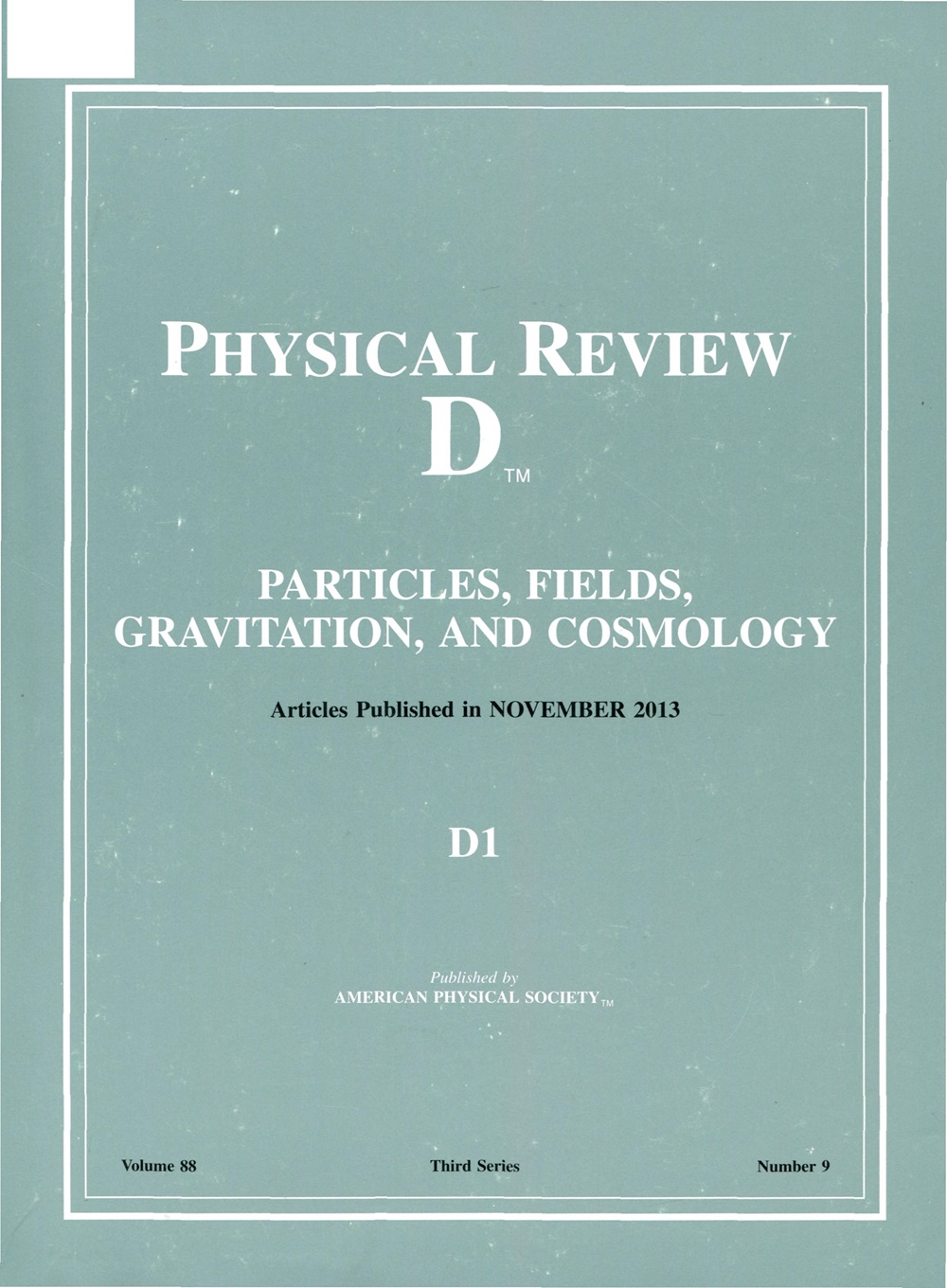Angular modulation of nonlinear Breit-Wheeler yield by vacuum dichroism
IF 5
2区 物理与天体物理
Q1 Physics and Astronomy
引用次数: 0
Abstract
Vacuum polarization is numerically investigated for the interaction between a GeV electron beam and a counterpropagating ultraintense laser pulse in the quantum radiation-dominated regime. We identify a signal of vacuum polarization in pair density using a straightforward one-stage setup, circumventing the challenge of preparations of highly polarized probe photons or precise measurements of photon polarization. In our scheme, most electrons are scattered in the direction of laser propagation while emitting substantial linearly polarized gamma photons. These photons undergo vacuum birefringence and dichroism before decaying into electron-positron pairs via the nonlinear Breit-Wheeler process. We demonstrate that vacuum dichroism enhances the purity of linear polarization, which suppresses the overall yield of electron-positron pairs and allows energetic photons to penetrate deeper into the laser pulse. The pairs produced by these energetic photons are more likely to be deflected into small-angle regions rather than being reflected, leading to an enhancement of pair yield in forward scattering. The difference in positron yield may have potential applications in measuring vacuum polarization effect in future laser-particle experiments.通过真空二色性对非线性布雷特-韦勒产量进行角度调制
本文章由计算机程序翻译,如有差异,请以英文原文为准。
求助全文
约1分钟内获得全文
求助全文
来源期刊

Physical Review D
物理-天文与天体物理
CiteScore
9.20
自引率
36.00%
发文量
0
审稿时长
2 months
期刊介绍:
Physical Review D (PRD) is a leading journal in elementary particle physics, field theory, gravitation, and cosmology and is one of the top-cited journals in high-energy physics.
PRD covers experimental and theoretical results in all aspects of particle physics, field theory, gravitation and cosmology, including:
Particle physics experiments,
Electroweak interactions,
Strong interactions,
Lattice field theories, lattice QCD,
Beyond the standard model physics,
Phenomenological aspects of field theory, general methods,
Gravity, cosmology, cosmic rays,
Astrophysics and astroparticle physics,
General relativity,
Formal aspects of field theory, field theory in curved space,
String theory, quantum gravity, gauge/gravity duality.
 求助内容:
求助内容: 应助结果提醒方式:
应助结果提醒方式:


